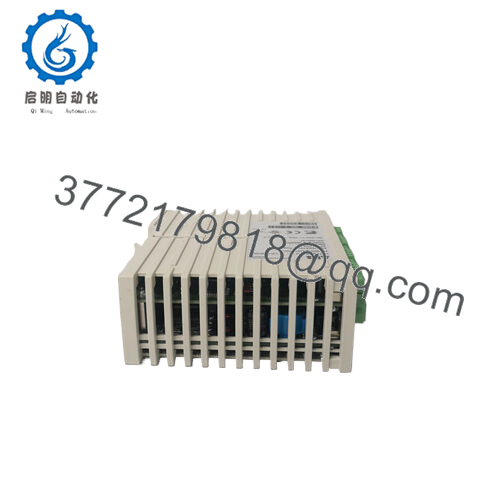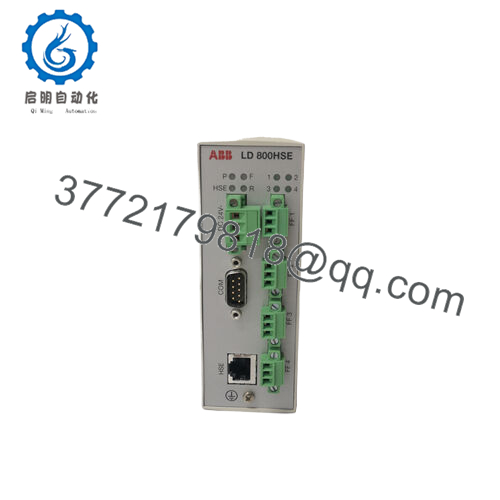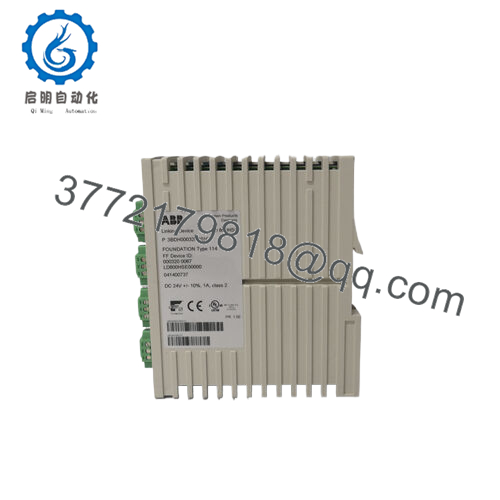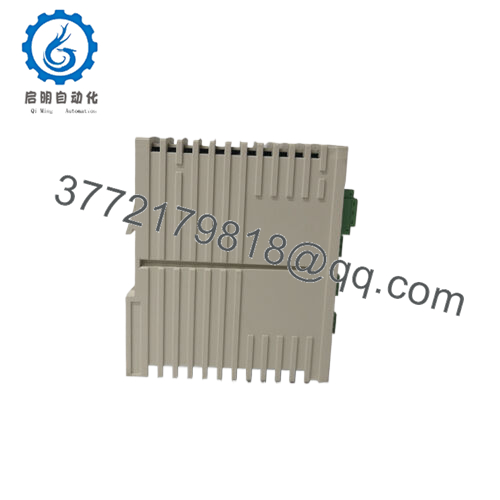Description
In the expansive domain of industrial automation, where the convergence of field-level sensors and high-level control systems must navigate the complexities of diverse protocols, network topologies, and hazardous environments without sacrificing data integrity or operational flow, engineers frequently encounter the hurdles of siloed communications that fragment oversight and amplify latency in critical loops. Envision a chemical processing facility, where FOUNDATION Fieldbus (FF) devices—pressure transmitters, flow meters, and valve actuators—must relay multivariable data across sprawling H1 segments to a central DCS; any disconnect in the HSE backbone could skew process variables, leading to off-spec batches, safety excursions, or compliance lapses in setups where real-time diagnostics are the lifeline for yield optimization. Or picture an offshore oil platform, battered by corrosive salts and explosive risks, where legacy H1 networks strain to integrate with Ethernet-based SCADA, risking polling delays that cascade into pump misalignments or inventory inaccuracies amid the relentless demand for 24/7 uptime. These aren’t peripheral glitches; they’re the foundational frictions in process control ecosystems, where high reliability in I/O signal bridging is non-negotiable to sustain modular architectures that adapt to expansions without the engineering overhead of custom gateways or constant reconfiguration.
- LD800HSE 3BDH000320R0101
The ABB LD800HSE 3BDH000320R0101 steps in as a FOUNDATION Fieldbus Linking Device in ABB’s 800xA and Freelance DCS portfolios, crafted to forge seamless gateways between FF H1 field links and High-Speed Ethernet (HSE) subnets for robust, transparent device integration. It tackles the engineer’s drive for unified data orchestration, linking up to four independent H1 segments—each with its own Link Active Scheduler (LAS)—to an HSE backbone, enabling publish/subscribe messaging and client/server access to H1 function blocks without host reconfiguration. In distributed applications like batch reactors or remote monitoring outposts, the ABB LD800HSE 3BDH000320R0101 becomes essential, supporting up to 32 devices per H1 link with sub-millisecond latency for fast data cycles, while its DIN-rail mount and fiber optic HSE port minimize cabling sprawl in hazardous zones. By facilitating republishing of H1 data across links or to HSE, it quells the isolation of field silos, delivering clean I/O signals that empower process control loops to evolve from siloed to synchronized, all while meeting ATEX/IECEx Zone 2 certifications for explosive atmospheres.
What distinguishes the ABB LD800HSE 3BDH000320R0101 in industrial automation is its understated scalability—it’s the linker that doesn’t impose but interconnects, with firmware-upgradable cores that adapt to evolving FF schedules, letting you infuse diagnostics like device health or link status directly into 800xA HMIs without middleware marathons. For teams retrofitting legacy H1 islands, it dissolves the drag of protocol proxies, easing migrations to HSE-native oversight. Ultimately, it cultivates process control that’s not just linked but luminous, trimming the latency where discrepancies fester and fortifying the high reliability your throughput metrics and regulatory nods crave.
The ABB LD800HSE 3BDH000320R0101 operates at the fieldbus-to-network junction in your automation stack, DIN-rail mounting in cabinets to host four H1 ports—each with 31.25 kbps twisted-pair or fiber connectivity—while its HSE Ethernet interface (10/100 Mbps) bridges to control backbones, arbitrating FF schedules via embedded LAS masters to poll and republish data like temperature setpoints or valve positions into HSE multicast streams. It integrates natively with ABB’s AC 800M controllers or Freelance systems, where H1 devices appear as virtual nodes in Control Builder for seamless function block mapping, supporting up to four sub-cycles for time-critical variables. In a full deployment, it slots alongside power supplies and I/O modules, its firmware enabling transparent configuration of H1 parameters from the host, with diagnostics like link token passes or error counters accessible via web interfaces or SNMP for HMI overlays.
Its rapport with the ecosystem is intuitive: daisy-chain H1 segments to FF transmitters like the TB840, and it’s auto-discovering schedules on boot, while HSE redundancy via ring topologies dodges single-point failures. Positioned in the lower I/O layer, the ABB LD800HSE 3BDH000320R0101 excels in hazardous cabinets, scaling from single-segment skids to multi-link arrays in 800xA frameworks, its FF stack—compliant with H1/HSE interoperability tests—easing ties to third-party devices via OPC servers. For hybrid environments mixing FF with Profibus, its gateway mode minimizes protocol conversions, letting you focus on tuning schedules rather than chasing handshakes.
| Specification | Details |
|---|---|
| Model Number | LD800HSE 3BDH000320R0101 |
| Brand | ABB |
| Type | FOUNDATION Fieldbus Linking Device |
| Input Voltage | 24 V DC |
| Operating Temp Range | -20°C to +60°C |
| Mounting Style | DIN Rail |
| Dimensions | 100 x 35 x 105 mm |
| Weight | 0.4 kg |
| Interface/Bus | HSE Ethernet, 4x H1 (Twisted Pair/Fiber) |
| Compliance | CE, RoHS, ATEX Zone 2, IECEx |
| Supported Protocols | FOUNDATION Fieldbus H1/HSE |
| Typical Power Draw | 5 W |
Opting for the ABB LD800HSE 3BDH000320R0101 means investing in a reliability linchpin engineered for the sprawl of fieldbus frontiers, where its isolated H1 ports and HSE buffering shrug off EMI or segment faults to deliver performance consistency that locks schedules and curbs the token rotations that erode polling efficiency. In explosive bays where H1 chains snake through conduits, this translates to operators who calibrate quarterly, not daily, with auto-LAS handovers that sidestep single-link stalls—directly honing the diagnostics your MTTR targets tout, with fewer cascade alerts that shadow shift yields.
Integration flows with consultative ease, slashing engineering overhead by host-transparent configs—provision four H1 links, and they’re mapping blocks in a download, while link health pings via SNMP distill anomalies to at-a-glance graphs, not guesswork grids. Engineered for enduring duty in dusty or damp plants, the ABB LD800HSE 3BDH000320R0101 ensures long-term performance through self-healing schedules that flag master shifts early, morphing reactive resets into predictive patrols that extend MTBF. For scalability, its multi-link design means growing from 32 to 128 devices feels incremental, not invasive, fostering a control architecture that evolves with your facility’s ambitions while holding costs in check.
In chemical batch plants, the ABB LD800HSE 3BDH000320R0101 links H1 valve clusters to 800xA controllers, republishing flow data for recipe sequencing amid reactive swings—its sub-cycle support ensures precise dosing, upholding critical system uptime in process control environments where off-specs spike waste. Oil and gas separators deploy it for remote H1 gauges, its Zone 2 rating mirroring link stats amid vapor volatility; here, high reliability thwarts ingress faults, enabling custody transfer logs that meet API standards without sentinel sweeps.
Power utilities complete its versatility, bridging HSE backbones with H1 turbine sensors for load balancing—the device’s redundancy steels against transient outages, anchoring continuous uptime in distributed process control setups that prize schedule sanctity over segment sprawl.
LD800HSE EX 3BSE073314R1 – Hazardous-area variant with reduced cabling for Zone 1/21 field installs.
CI854AK01 3BSE030220R1 – Profinet IO companion for hybrid fieldbus migrations in AC800M.
TB840 3BSE013204R0001 – FF transmitter module for H1 device integration extensions.
FBOO11 3BSE004878R1 – Fiber optic H1 adapter for long-haul, EMI-immune segment links.
DO801 3BHE014070R0001 – Discrete output add-on for H1-linked alarm routing.
AI880A01 3BSE042236R2 – Analog input expander for multi-variable HSE republishing.
PM861AK01 3BSE018157R1 – CPU host for HSE processing in 800xA networks.
Before racking the ABB LD800HSE 3BDH000320R0101, map your H1 topology against FF guidelines—overloading a segment beyond 32 devices risks token delays, so tally your LAS assignments and prune if cycles creep past 250 ms. Scan for enclosure airflow too; with its modest heat output, it needs 20mm gaps around the DIN rail in enclosed cabinets, especially if ambient pushes toward 55°C—a quick CFM calculation based on your IP rating will confirm margins. Firmware readiness is another must: download the latest HSE-compliant version from ABB’s portal and verify against your 800xA revision to avoid handshake halts during commissioning.
Once it’s polling, ongoing maintenance keeps things proactive and pared down. Start with monthly LED status reviews—green for nominal H1 activity, amber for token faults—to catch drifts early. Connector inspections every quarter, focusing on torque specs to prevent cold joints from vibration, pair well with a yearly full-system test: simulate device failures and log schedule integrity to baseline performance. If you’re in a humid or dusty spot, wipe down the housing with approved non-abrasives to preserve seals. These steps aren’t onerous; they’re the measured cadence that extends the module’s life, letting you spot trends like gradual link noise before they impact your process control loops.





 WhatsApp: +86 16626708626
WhatsApp: +86 16626708626 Email:
Email:  Phone: +86 16626708626
Phone: +86 16626708626


